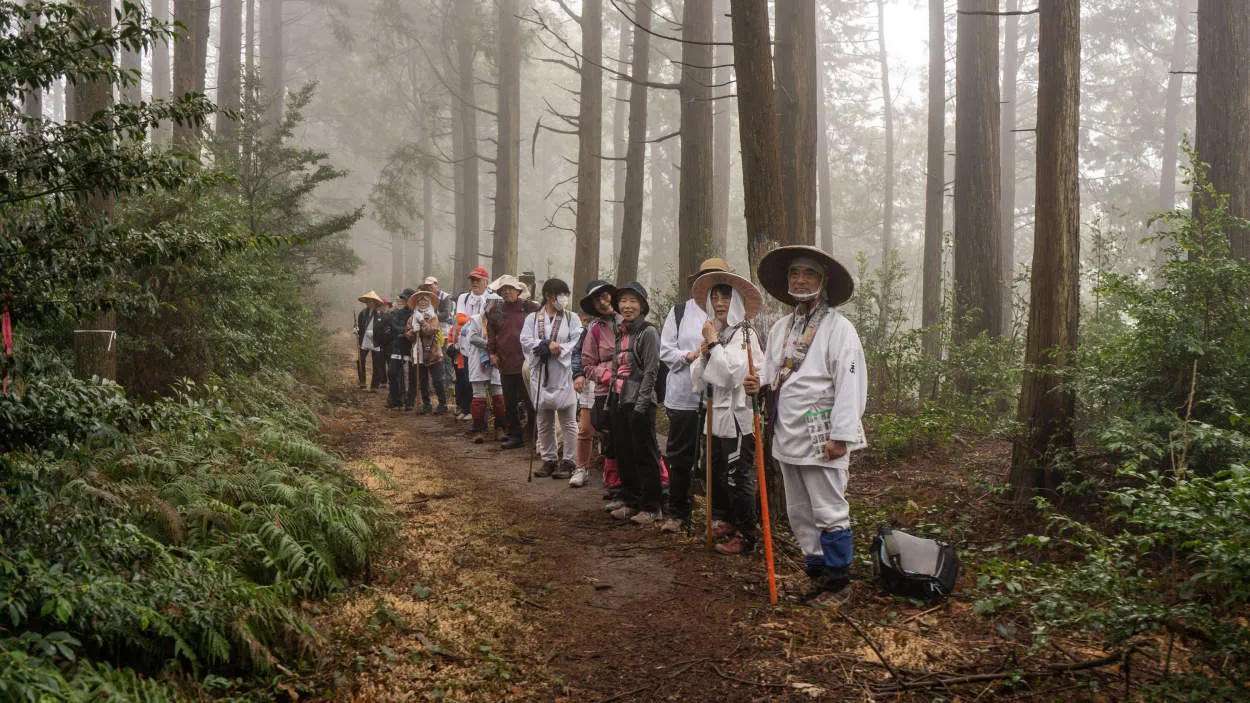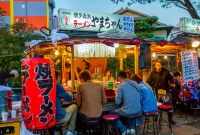The Shikoku Pilgrimage is a revered trek that offers a spiritual journey like no other. Spanning 1,200 kilometers in Japan’s Shikoku Island, this sacred route takes pilgrims to 88 temples, each with its unique charm and historical significance. Embark on a transcendental adventure and discover the deep-rooted traditions, breathtaking landscapes, and inner serenity that await along the path.
Exploring Japan’s Ancient Pilgrimage Trail
Shikoku Pilgrimage: A Spiritual Trek
The Shikoku Pilgrimage is a sacred journey through the ancient pilgrimage trail of Shikoku Island in Japan. It is a spiritual trek that attracts both devout pilgrims and adventurous travelers from around the world.
Spanning approximately 1,200 kilometers, the Shikoku Pilgrimage takes pilgrims through 88 sacred temples that are associated with the renowned Buddhist monk, Kukai, also known as Kobo Daishi. Each temple offers a unique cultural and spiritual experience, allowing pilgrims to connect with Japan’s rich religious heritage.
The pilgrimage is not just a physical challenge but also a profound spiritual undertaking. It is believed that completing the entire trail cleanses the soul and grants spiritual enlightenment. Pilgrims follow the path with humility, reflecting on their lives and seeking self-discovery.
Throughout the journey, pilgrims experience the tranquility of Japan’s rural landscapes, passing through picturesque villages, serene forests, and awe-inspiring mountains. Along the way, they encounter local communities and fellow pilgrims, fostering a sense of camaraderie and shared experiences.
The Shikoku Pilgrimage is a blend of religious devotion, cultural immersion, and physical endurance. It offers a rare opportunity to explore the lesser-known regions of Japan, away from bustling cities and tourist traps. The trail allows travelers to delve into the heart of Japanese spirituality, gaining insights into the country’s traditional customs and beliefs.
Whether you embark on the Shikoku Pilgrimage for religious reasons, personal growth, or simply to experience the beauty of Japan’s countryside, this ancient trail promises a transformative journey that will stay with you long after you leave.
Spiritual Experiences and Rites of Passage
The Shikoku Pilgrimage is a cherished spiritual trek that takes place on the island of Shikoku, Japan. This pilgrimage is deeply rooted in Buddhist tradition and attracts thousands of pilgrims every year. Spanning approximately 1,200 kilometers, the pilgrimage consists of visiting 88 temples associated with the Buddhist monk Kukai, also known as Kobo Daishi. Each temple holds its own significance and offers pilgrims a unique spiritual experience.
The journey itself serves as a powerful rite of passage, transforming pilgrims both physically and spiritually. Meticulously following the traditional path, pilgrims undertake a transformative process of self-reflection and discovery. Through walking, meditating, and engaging in religious rituals, participants embark on a profound inner journey that connects them to their spirituality and to the teachings of Kukai.
Throughout the pilgrimage, pilgrims encounter various challenges, including physical exhaustion and unpredictable weather conditions. These obstacles symbolize the hardships and struggles of life, making the journey an allegory for the human experience. By persevering through these difficulties, pilgrims gain wisdom, resilience, and a deeper understanding of themselves.
This spiritual trek also allows participants to immerse themselves in Japan’s rich cultural heritage. Pilgrims have the opportunity to visit traditional Japanese villages, interact with the locals, and experience the country’s serene landscapes. The pilgrimage not only brings pilgrims closer to their spiritual beliefs but also offers a unique cultural experience that fosters personal growth and cross-cultural understanding.
Overall, the Shikoku Pilgrimage is a powerful and transformative journey that provides pilgrims with spiritual experiences and serves as a rite of passage. Through the physical challenges, religious rituals, and cultural immersion, participants gain a deeper connection to their spirituality, inner strength, and a greater appreciation for Japanese culture. This pilgrimage is an extraordinary endeavor that brings people from all walks of life together in search of spiritual enlightenment.
Cultural Highlights along the Shikoku Pilgrimage
The Shikoku Pilgrimage is a famous spiritual trek in Japan that covers 88 temples across the island of Shikoku. This pilgrimage offers not only a chance for spiritual reflection, but also a unique opportunity to immerse yourself in the rich cultural heritage of the region.
As you embark on this pilgrimage, you will encounter various cultural highlights along the way. From ancient temples that date back centuries to traditional Japanese arts and crafts, the Shikoku Pilgrimage is a journey that celebrates both spirituality and culture.
Ancient Temples
The 88 temples that make up the Shikoku Pilgrimage are of great historical significance. Each temple has its own unique architecture and design, reflecting the different periods in Japan’s history. Some notable temples include the Ryozenji Temple, the first temple of the pilgrimage, and the Koyasan Ono-in Temple, known for its beautiful autumn foliage.
Traditional Festivals
Throughout the year, Shikoku is home to numerous traditional festivals that are deeply rooted in the local culture. The Awa Odori festival in Tokushima is one of the most famous, where dancers clad in traditional costumes perform energetic dances in the streets. The Otsukaichi Hachimangu Shrine Festival in Matsuyama is another vibrant event that showcases traditional music, dance, and food.
Local Cuisine
Indulge in the delectable local cuisine of Shikoku as you traverse the pilgrimage route. Each region offers its own unique dishes, incorporating fresh seafood, local vegetables, and traditional cooking techniques. Don’t miss the opportunity to try Sanuki Udon, a famous type of thick wheat noodles served in a savory broth.
Arts and Crafts
Shikoku is known for its traditional arts and crafts. The region produces beautiful pottery, intricate woven textiles, and delicate paper products. Take some time to explore local workshops and galleries along the pilgrimage route to appreciate the skill and craftsmanship of these traditional artisans.
Embarking on the Shikoku Pilgrimage is not only a spiritual trek but also an immersive cultural experience. From ancient temples to vibrant festivals and traditional arts, the journey offers a window into the rich cultural heritage of Shikoku. So put on your walking shoes and get ready to embark on a truly unique and enriching adventure.
Conclusion
The Shikoku Pilgrimage offers a unique and spiritual trekking experience, immersing pilgrims in the rich history and culture of Japan. This challenging journey through 88 temples not only tests the physical endurance of the trekkers but also provides an opportunity for self-reflection and personal growth. Whether you are a devout Buddhist or simply seeking a meaningful adventure, the Shikoku Pilgrimage promises to be a transformative journey of the mind, body, and spirit.




